Consumers today expect more than just good intentions. They seek personalized experiences, self-service options, and perks like free returns and shipping. Meeting these expectations goes beyond what you offer—it’s also about communication.
Positive scripting equips service agents with tools to guide customer conversations toward goals like repeat purchases or upselling.conversations toward goals like repeat purchases or upselling. However, it’s essential to strike the right balance. Customers, especially upset ones, want to feel heard and understood—not like they’re talking to a robot.
When done well, scripting keeps interactions on track , boosts service reps’ confidence, and ensures effective, consistent communication without losing the personal touch.
Let’s explore how positive scripting can improve your customer experience.
Use positive scripting to deliver consistent and professional support
What is positive scripting?
Positive scripting involves using pre-written responses—often called canned responses—crafted to keep interactions customer-focused. These scripts are designed to help your team handle customer conversations in a way that’s consistent, empathetic, and solution-oriented, even when the situation gets tough.
The idea is simple: make customers feel heard and valued while keeping the conversation centered around solving their issues. By using language that emphasizes solutions over problems, positive scripting helps you turn tricky situations into opportunities for building trust and loyalty. It’s a great way to ensure both your customers and your support team have a smoother, more positive experience.
Positive scripting equips your customer service team with pre-written templates designed to guide conversations toward positive outcomes, even with frustrated customers. These scripts not only help at the moment—they can also serve as valuable training tools for your contact center employees. By incorporating role-playing exercises into training sessions, agents can practice delivering these scripts in realistic scenarios, building confidence and ensuring consistency in their interactions.
However, there needs to be a balance between using a customer service script and genuinely connecting with the consumer. Focus too much on one side of the equation, and you risk coming across as robotic or impersonal. Also, customer service scripting is only fully effective when you identify the appropriate channels to implement it.
Let’s dive into some practical ways to use positive scripting to improve customer experience.
Where to use positive scripting
Positive scripting works across a variety of customer support channels. As with any customer service process, it’s essential to tailor your scripts to match the channel where they’ll be used to maximize effectiveness.
Here are the channels where positive scripting can make the biggest difference:
Live chat support
Live chat is one of the most popular customer service channels due to its real-time responses and conversational tone. However, handling customer frustration through live chat comes with its own set of challenges. To begin with, you can’t use your voice to communicate empathy and it’s also difficult to assess the customer’s mood. Moreover, since your responses must be quick, you can’t spend too much time formulating an appropriate answer.
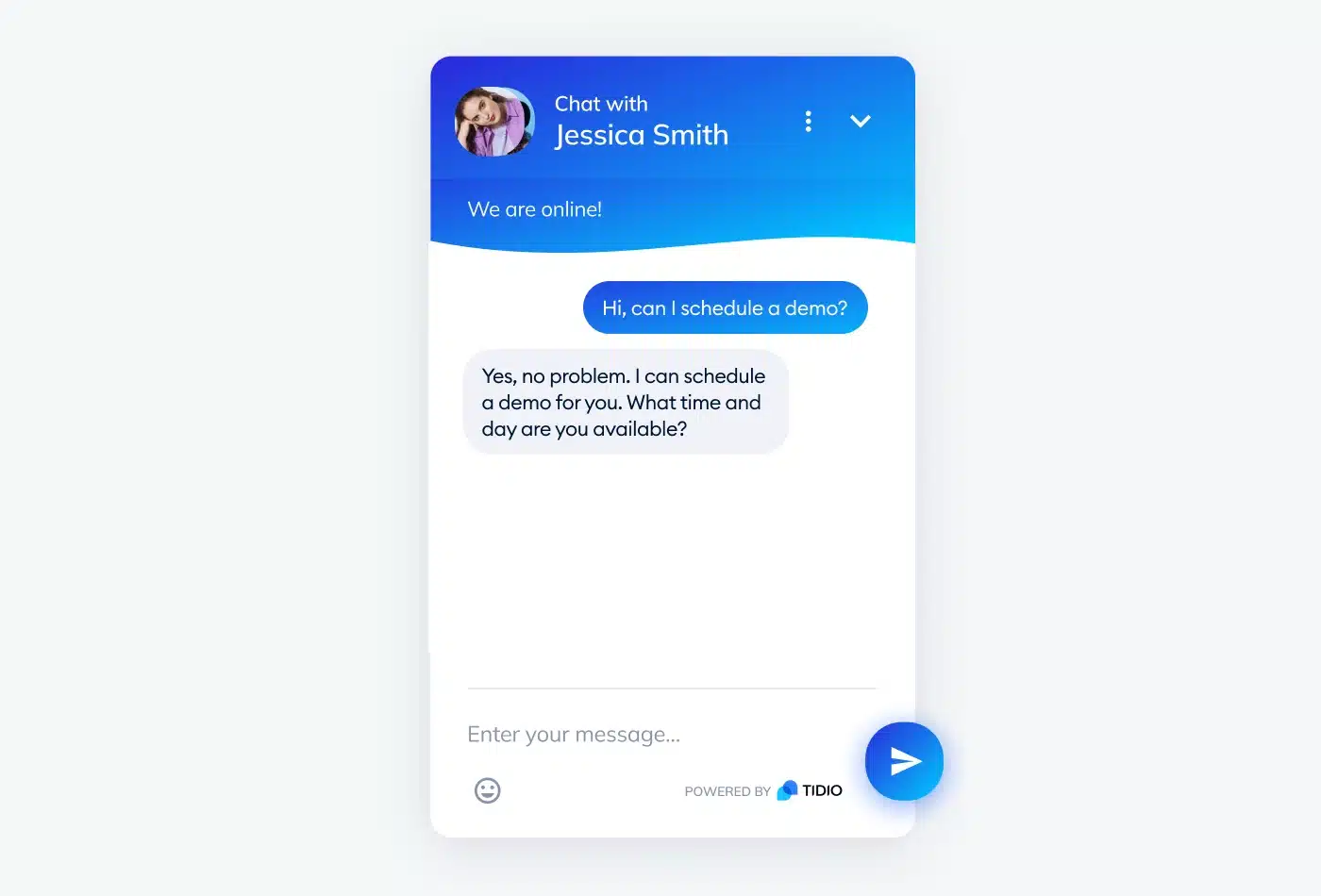
That’s where live chat scripts come in handy. With tools like Tidio, you can use positive scripting to engage your audience effectively while managing chats from multiple platforms—Facebook Messenger, Instagram, WhatsApp, and your website—all from a single dashboard. There’s also a live typing preview feature which will make it easier for agents to choose the appropriate script faster.
Tidio’s live chat widget supports multiple languages, so you can reach customers wherever they are, on their terms. It’s a great way to keep conversations friendly and productive, no matter the issue. You can also use positive scripts to personalize product recommendations directly through the chat widget, making interactions more engaging and relevant for your customers.
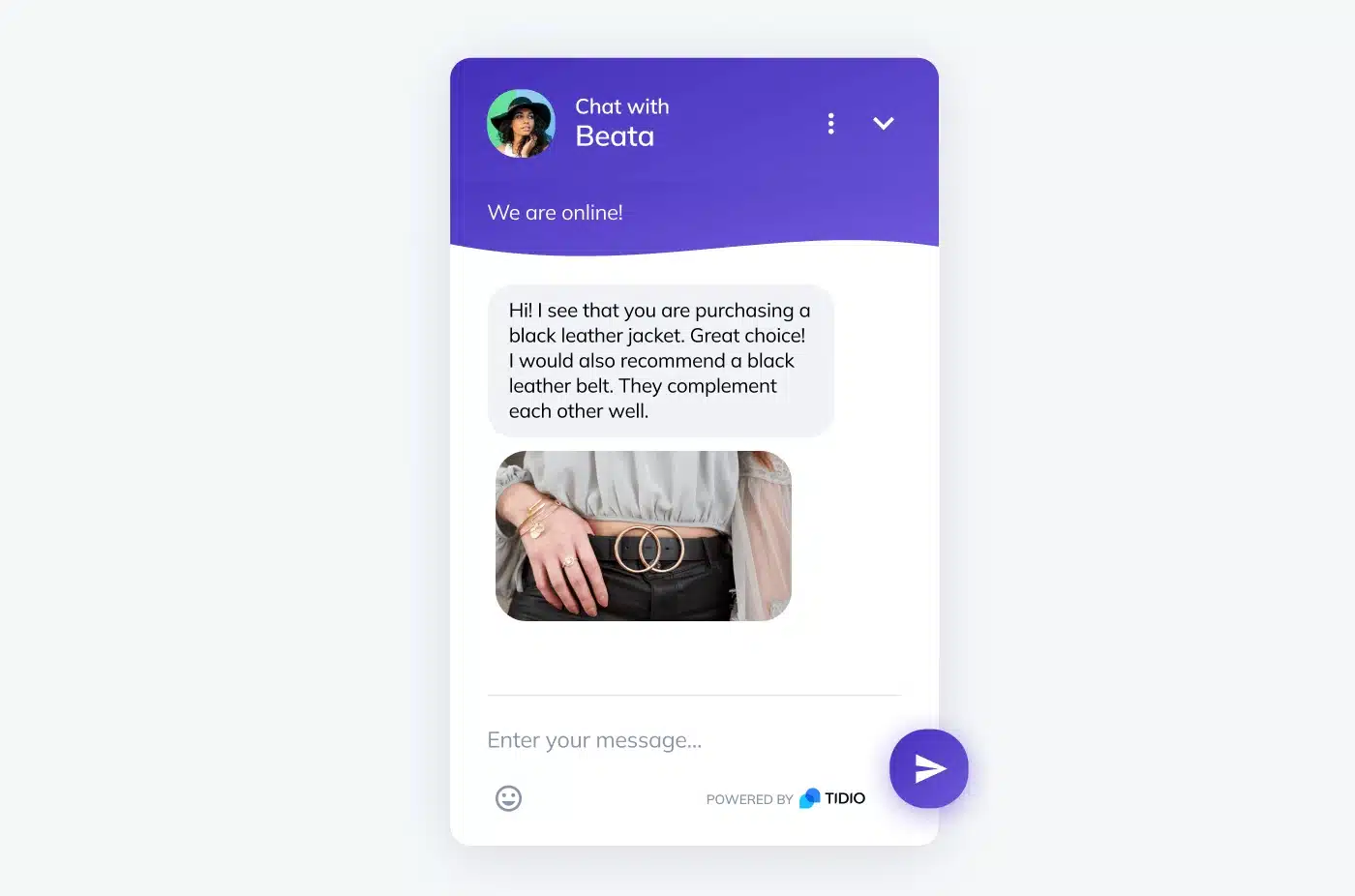
Read more: Check out all you should know about multilingual live chat.
Streamline positive scripting across channels with Tidio live chat
Chatbots and AI assistants
Chatbots are automated tools that simulate human conversation to address customer queries through text-based interactions. Ranging from rule-based bots to advanced AI assistants, they engage your audience, improve user experience, and provide customer support. Implementing positive scripting across various chatbot types can significantly improve the quality of personalized responses.
Notably, a survey indicates that 73% of consumers expect websites to feature AI chatbots.

Tidio’s Lyro, a conversational AI chatbot, exemplifies this approach. Leveraging artificial intelligence and natural language processing, Lyro engages users in human-like interactions. It can be trained using information from your knowledge base, allowing customization consistent with the context of each inquiry. Additionally, Lyro offers a personality tab where you can select a preferred tone of voice and create custom predetermined responses, ensuring consistent and tailored communication across all channels.

Read more: Discover essential tips for building a knowledge base chatbot.
Like live chat and chatbots, email is a text-based channel, which can make it challenging to convey genuine empathy. However, unlike those real-time platforms, email gives customer service representatives the opportunity to spend more time crafting thoughtful responses. By combining email marketing templates with positive scripting, your team can deliver personalized, helpful solutions that effectively address customer concerns. In fact, a Forbes study reveals that personalized emails increase open rates by 26%.
Social media
Social media has become one of the go-to channels for customer support, and it’s easy to see why. Platforms like Instagram, Facebook, and WhatsApp let your brand connect with customers right where they feel most comfortable. In fact, research by MarketingSherpa shows that 95% of adults aged 18 to 34 are likely to follow a brand on social media. That’s a huge opportunity to engage directly with your audience.
Whether you’re responding to DMs or addressing comments on your posts, positive scripting can be a game-changer. By using pre-crafted positive responses, you can ensure every interaction is professional and leaves customers with a great impression of your brand.
Managing these interactions effectively is where tools like Tidio come in. Tidio offers multichannel customer service, allowing you to handle messages from platforms like Instagram, Facebook, and WhatsApp using social media chatbots from one single dashboard.

Read more: Learn all you should know about how to create a WhatsApp chatbot for your needs. Also, be sure to check out our piece on Instagram chatbots.
Help desk templates and scripts
Customer service templates and scripts should be created using positive scripting. If your team members are using a help desk tool, you can set up a repository of help desk templates for agents to use for customer interactions.

If you’re using Tidio, you can create canned responses to respond to commonly asked questions. Tags make organizing these responses even easier, allowing you to categorize them not just by customer names, but also by topics or common customer issues.
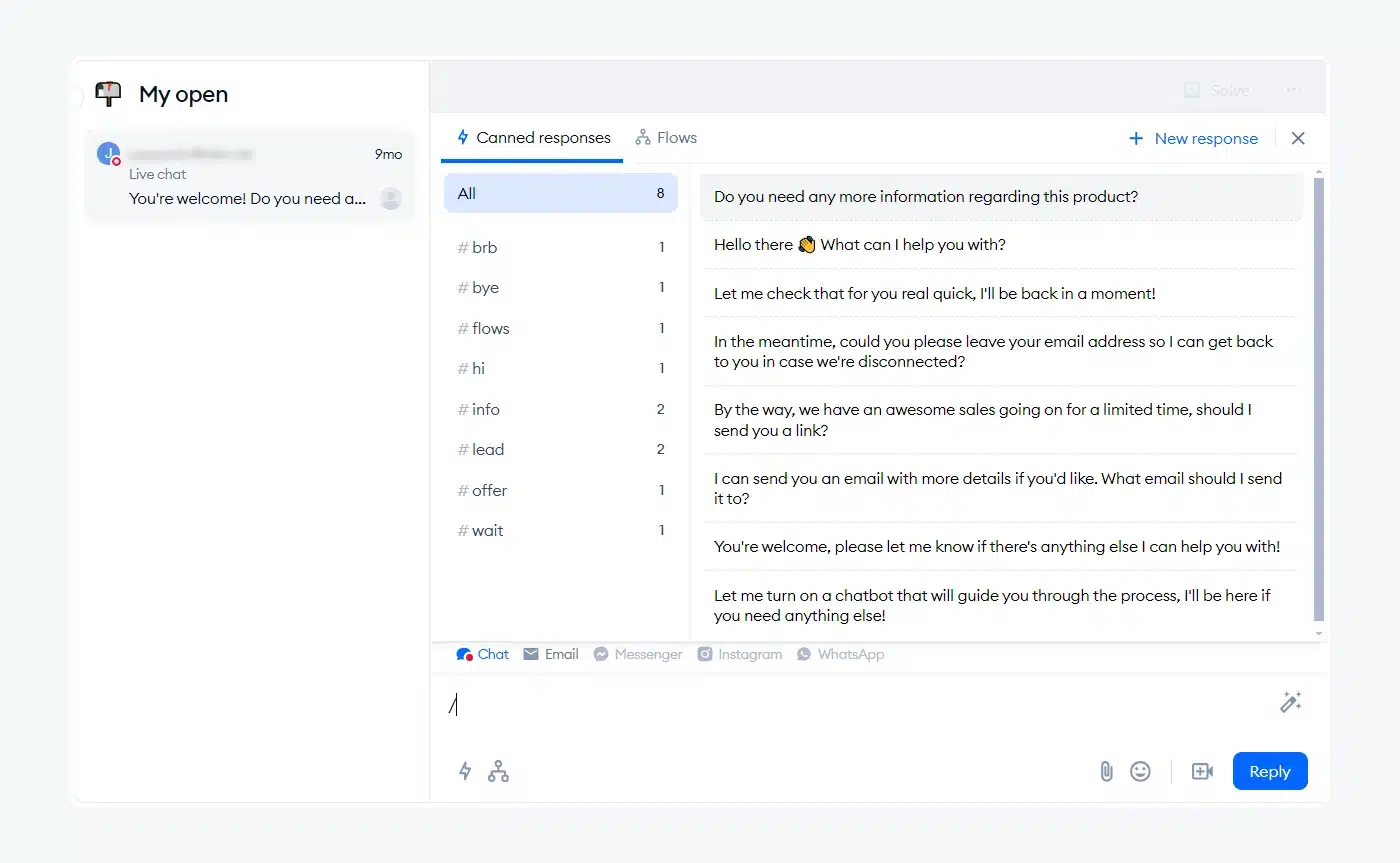
Another great feature of Tidio is that you can create a canned response directly from the conversation section, streamlining your workflow and saving time during active chats. This ensures your team can respond faster while maintaining a consistent and professional tone.
Read more: Check out the best help desk management practices and how they can add value to your business.
Benefits of positive scripting
Dealing with angry customers can make it hard to find the right positive words in the moment. That’s where positive scripts come in—they give your customer service team the tools they need to de-escalate tense situations and guide conversations toward a more productive outcome. It’s a powerful way to turn challenges into opportunities for better connections.
But that’s just the beginning. Here are more examples of how positive scripting can elevate your company’s customer service:

- Maintaining a positive brand voice — by implementing positive scripting for better customer service, you can ensure your brand’s messaging is consistent, and your customer communication sounds optimistic. Positive language in customer service leads to better outcomes such as an increase in real-time sales and improved customer satisfaction.
- Encouraging loyalty — a Salesforce report shows that 78% of customers will do repeat business with a brand if its customer service is excellent. In other words, if you want to boost customer loyalty and repeat purchases, you will have to deliver positive customer scenarios at every step of the customer journey map.
- Consistent messaging across all communication channels — did you know that 75% of customers expect a consistent experience regardless of how they interact with your company? Positive scripting helps your agents maintain consistent responses on live chat, email, social media, and other channels. It ensures that your customer service aligns with your company’s vision, policies, and procedures, creating a unified experience.
- Building agent confidence — customer service scripts are especially valuable for new agents joining your team. These scripts provide a reliable framework they can use as guidance during customer interactions, helping them navigate conversations with ease. Over time, customer service agents can build their confidence and develop the skills to handle situations more independently, even improvising when necessary. Positive scripting ensures they have the right tools to succeed from day one.
Read more: Find out about omnichannel customer service and how you can set it up for your business.
Positive scripting examples
Using positive words and phrases can create a more uplifting and satisfying overall customer experience. Here are some examples of positive scripting for your business:
- Greetings: “Hello! Welcome to [Insert (Company Name)] How can I help you today?”
- Apology: “I completely understand how frustrated you must be.” or “I’m truly sorry to hear you are experiencing this issue.”
- Assisting: “I’m here to help!” or “Let us resolve this quickly so you can resume enjoying our product.”
- Being appreciative: “Thank you for bringing this issue to our attention.” or “Thank you so much for your patience.”
- Offering assurance: “Absolutely, I’d be happy to help with that!” or “We’ll do everything we can to enhance your experience.”
- Suggesting solutions: “Let me help you find the information you need.” or “Can I suggest an alternative solution?”
- Closing conversations: “We’re always here to help, so please contact us anytime!” or “If you have any other questions, please don’t hesitate to contact us.”
5 positive scripting tips for successful customer service
Implementing positive scripts is essential for delivering exceptional customer service. However, to truly see their impact, they need to be used correctly.
Here are five best practices you can apply to maximize the benefit of positive scripting.
1. Use empathetic language
It’s easy to lose sight of the fact that customers are real people with genuine frustrations. This is especially true when interacting through text-based channels like live chat, social media, or email, where face-to-face cues are missing.
As a starting point, ask yourself: “Would I say this to a customer in person?” If not, tweak the wording to sound more empathetic. For instance, instead of:
“It’s our policy to record this information before we get started.”
Try:
“Here’s how I can make this easier for you. Let’s start by jotting down some information.”
Empathy statements help humanize the interaction and build trust.
2. Use scripts as general guidelines only
Scripts should guide the conversation, not control it entirely. Think of them as a framework for your agents rather than a rigid playbook.
For example, your script might include steps for greeting frustrated customers or explaining policies like returns. But agents should also have the flexibility to adapt and add information to handle follow-up questions or unique scenarios. This balance ensures conversations feel natural and helpful.
Read more: Check out the best returns management software for your business and learn how to manage product returns.
3. Focus on what you can do
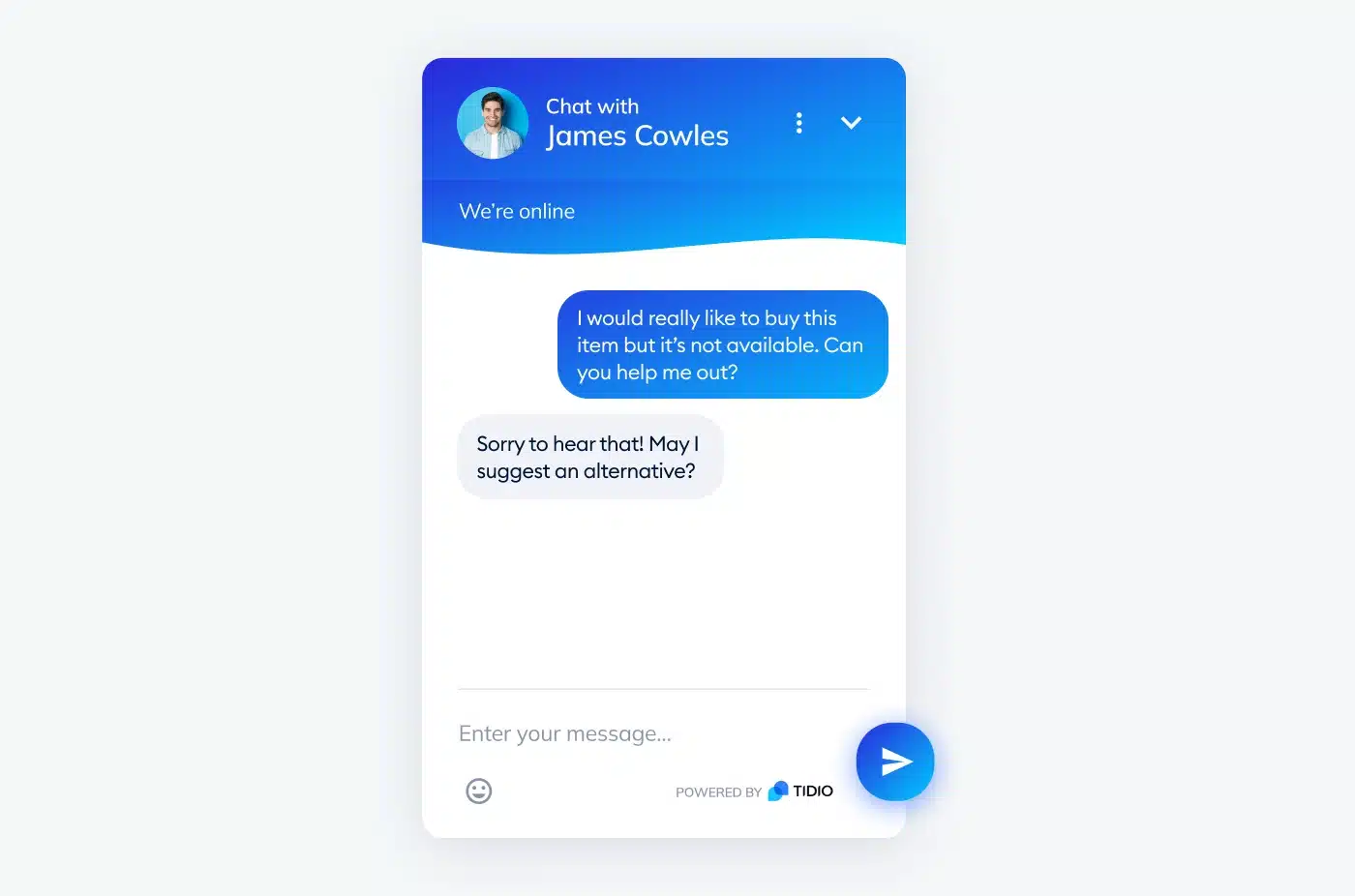
Positive scripting is particularly effective for addressing common customer concerns, such as tracking orders, shipping inquiries, or return requests. The key is to shift the focus from limitations to solutions, ensuring customers feel supported and valued. Start by identifying the most frequently asked questions and crafting empathetic scripted responses that are easily adaptable for each situation.
For example, instead of saying:
“We can’t process your return at this time…”
Try:
“Here’s what we can do to resolve this for you…”
This small but impactful shift in tone not only reassures customers but also builds confidence that their issue is being taken seriously. A solution-focused approach helps de-escalate frustration and reinforces trust in your brand.
But don’t stop there—train your team to use positive scripting as an opportunity to go above and beyond. For instance, if a customer has a shipping delay, your response might include a proactive update on the expected delivery date, along with suggestions for alternative solutions like expedited shipping for future orders. This extra effort shows that your team isn’t just resolving issues—they’re actively investing in customer care and working to improve their experience.
By focusing on what you can do, you turn potentially negative interactions into opportunities to strengthen relationships and create loyal customers.
4. Get your greeting right
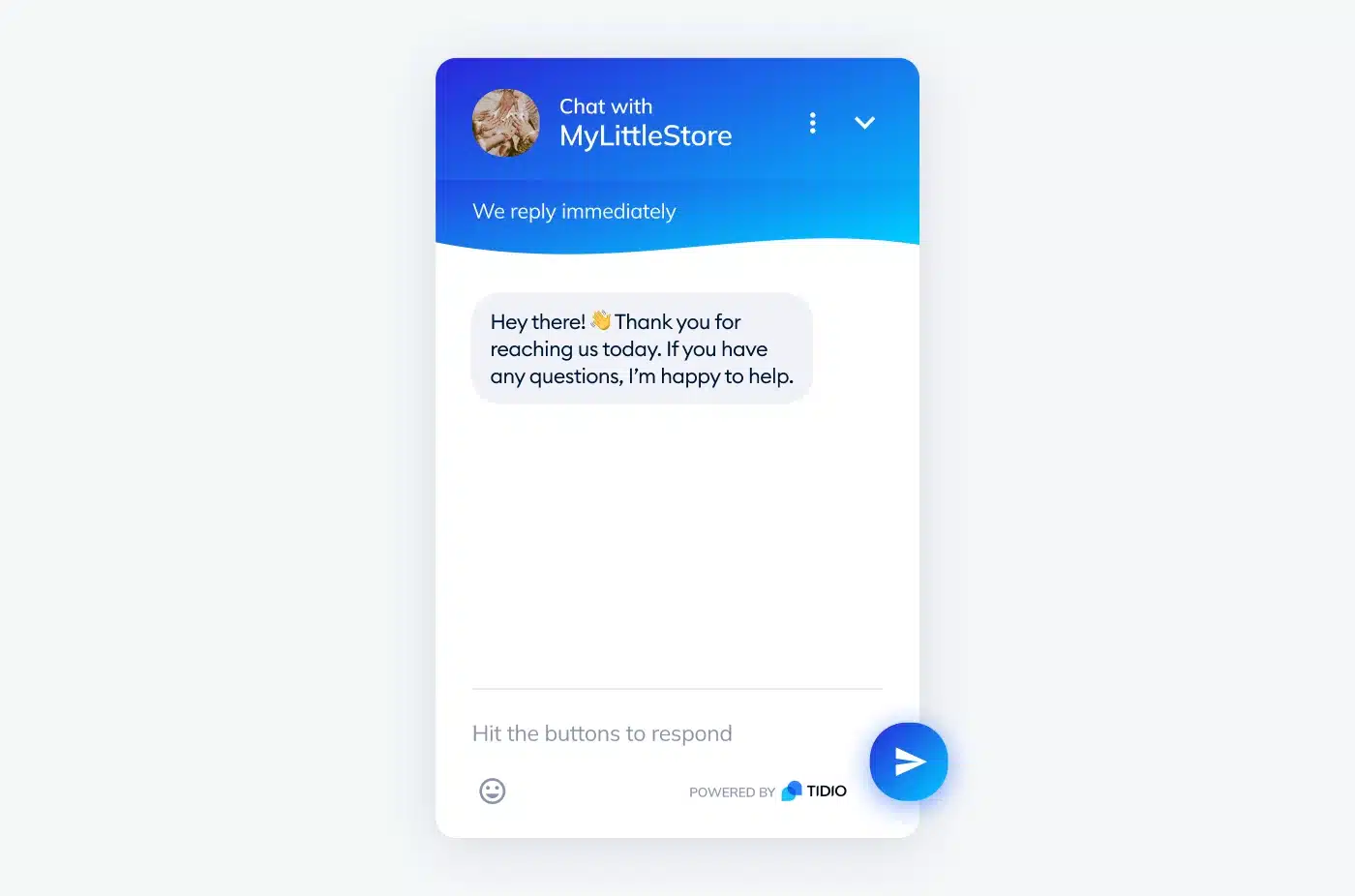
First impressions matter, especially in customer service. A warm and friendly greeting sets the tone for the rest of the interaction.
A good greeting script might include:
- Stating your company and agent name
- Asking for the customer’s name
- Wishing them a good morning or afternoon
- Reassuring them that you’re ready to help
For example:
“Thank you for reaching out to [Company Name]! This is [Agent Name]. May I have your name, please? I’d be happy to assist you today.”
5. Mirror the customer’s language (where appropriate)
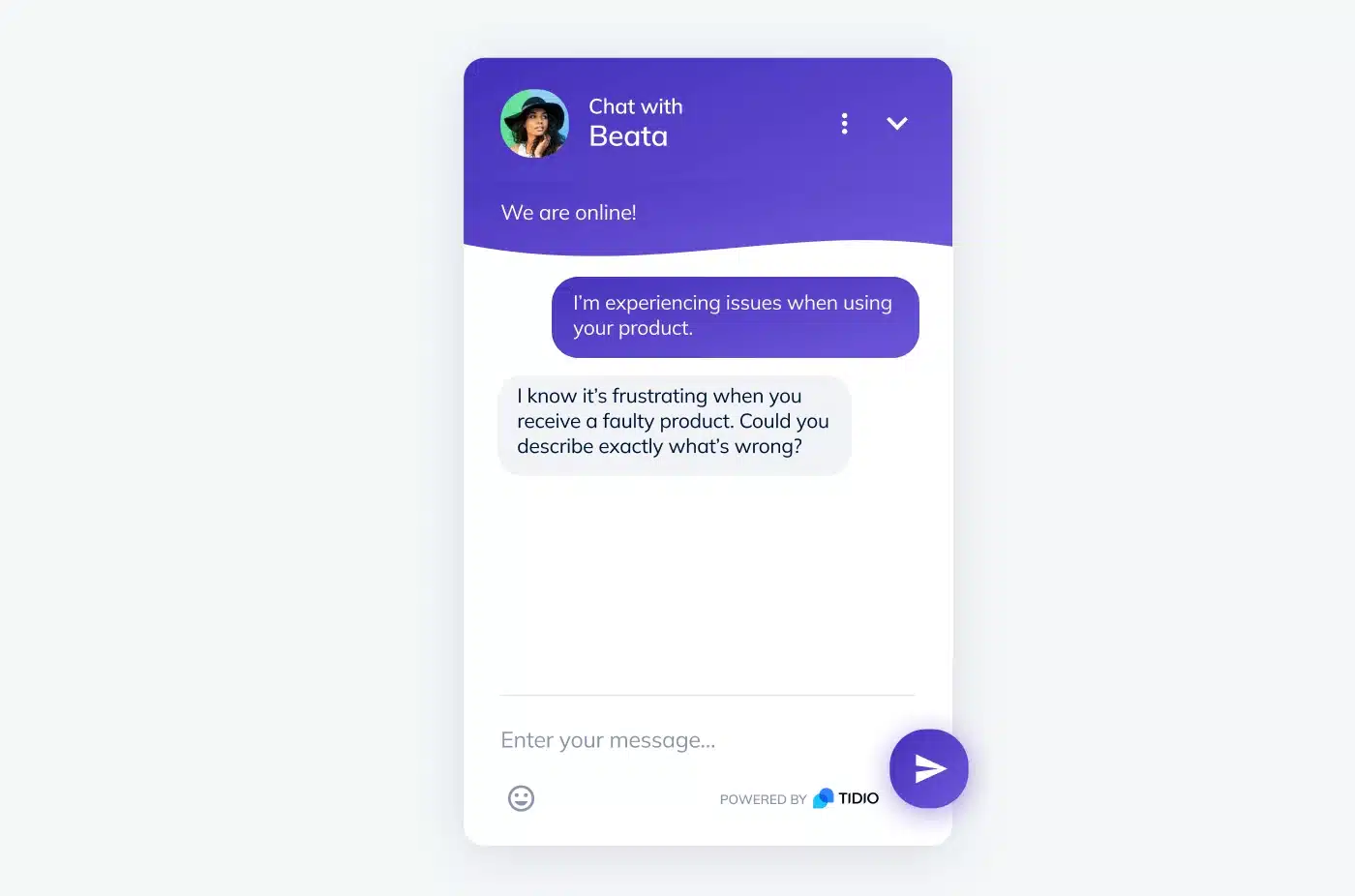
Empathy starts with active listening. Encourage your agents to genuinely understand the customer’s tone, language, and choice of words. When appropriate, mirror their language to build rapport and demonstrate that they’re being heard.
For instance, if a customer says: “I’m really frustrated because this has taken so long,” your response could be:
“I completely understand how frustrating delays can be. Let’s get this resolved for you right away.”
This approach makes the interaction feel more personal and authentic.
Use positive scripting for excellent customer service with Tidio
Using empathy and understanding in your customer interactions will naturally guide you to use the right language. Positive scripting is a great way to enhance customer service and ensure your team communicates effectively.
If you want to provide a great customer service experience across multiple channels, the right tools are essential. Tidio’s customer service software offers a powerful live chat tool and AI chatbots to streamline your support processes. Plus, with features like canned responses, you can ensure consistency across multiple customer communication channels while personalizing interactions.
Try Tidio for free today!
Streamline positive scripting across channels with Tidio live chat

